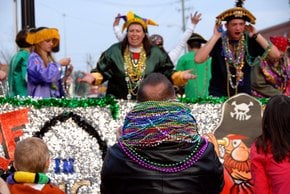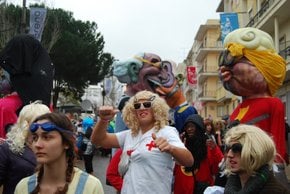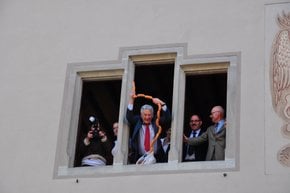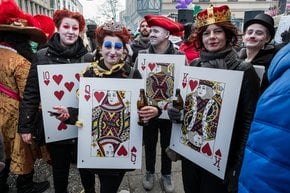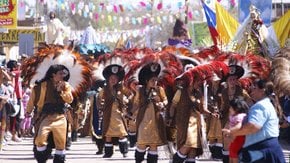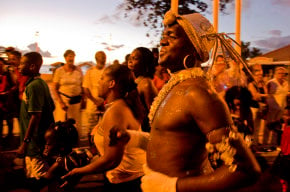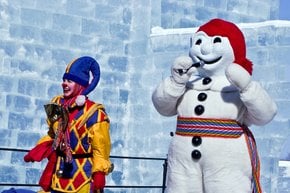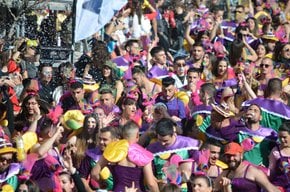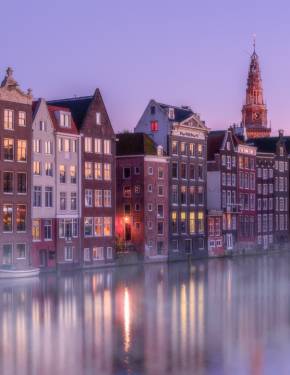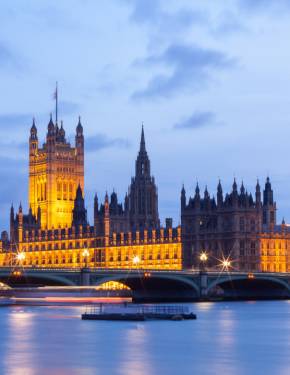Mardi Gras (Carnaval) in France 2025
Amazing floats, masquerades, and delicious food make winter festivities season in France unforgettable
Dates: mid-January–early March 2025
Mardi Gras and Carnaval season in France is traditionally a time for indulging in rich, fatty foods before the austerity of Lent. The festivities are marked by vibrant public celebrations and parades featuring outdoor feasts, masquerades, masked balls, and performances from magicians and stilt walkers. Typical dishes include crêpes, waffles, and beignets. Some of the largest parades take place in Nice, Mulhouse, Dunkirk, and Annecy, each showcasing the colorful and lively spirit of the season.
Carnaval de Nice (February 15–March 2, 2025)
The Nice Carnival, one of Europe's largest winter festivals, dates back to 1294 and attracts over a million visitors. The event features a series of spectacular parades, including the Opening Parade with the King and Queen, the Parade of Lights, where floats are illuminated at night, and a daytime parade that delights families with giant heads and colorful floats. In 2025, the theme will be "King of the Seas and Oceans." The Carnival Village offers free access to workshops, food stalls, and various activities, making it a vibrant celebration for all ages.
Flower Parade
A major highlight of the Nice Carnival is the renowned Flower Parade, which occurs multiple times during the festivities. Elaborately decorated floats showcase floral designs while performers in extravagant costumes interact with the audience. These vibrant floats are accompanied by music, scents, and colors, adding to the spectacle. In a beloved tradition, costumed women toss flowers to the crowd. The event concludes with a spectacular fireworks display over the Baie des Anges, offering a stunning visual finale to the celebration.
Venetian Carnival, Annecy (March 7–9, 2025)
The Annecy Carnival, held annually after Shrove Tuesday, brings the charm of the Venetian Carnival to this picturesque alpine town. Since 1996, hundreds of masked participants have wandered freely through Annecy's old town and along the lake, creating an enchanting spectacle. The event features elaborate costumes and vibrant performances, with masks posing for photographers and interacting with the crowd. The celebration, which lasts for two and a half days, is free to the public and draws visitors from all over, making it a truly unique and magical experience.
Mulhouse Carnival (February 19–March 9, 2025)
The Mulhouse Carnival in Southern Alsace, once one of France's greatest from 1920 to 1935, is known for its vibrant parades, satire, and all-night festivities. Located near Switzerland and Germany, it attracts visitors with its lively celebrations, bars open until morning, and themed events like the "Night of the Royal Court" and the International Cavalcade. The 2025 Mulhouse Carnival features a packed schedule of vibrant events that showcase the area's rich cultural traditions. The celebrations kick off with neighborhood parades, followed by the Ladies' Evenings, which take place on February 21 and 28.
The heart of the festivities is the Mulhouse Carnival Weekend (March 7-9), with exciting activities like the Carnival Music Festival, the election of Miss Grandma and Mister Grandpa, and the spectacular International Cavalcade to commemorate the city's 800th anniversary. One of the weekend's most anticipated events is the "Night of the Royal Court," promising a dazzling evening. On March 5, Children's Day offers family-friendly fun with a parade, plus the election of the Little Princely Couple. The carnival wraps up on March 9 with the final charivari, a lively celebration marking the grand conclusion of the carnival season.
Dunkirk Carnival (January 1–March 22, 2025)
Dunkirk Carnival, one of northern France’s largest and most renowned celebrations, runs from January to March, with events occurring on weekends and some weekdays. The carnival, which originated in the 18th century, marks the feast before local fishermen, known as visscherbende, head out to sea for cod fishing. Participants dress in bright yellow fishermen’s coats and join in lively parades, competing musical bands, and the tradition of carrying giant puppets, known as Reuzes, which date back to the 1800s.
The carnival culminates on the "Trois Joyeuses" (Three Joyful Days), the Sunday, Monday, and Tuesday before Ash Wednesday. On these days, revelers gather for the grand herring throw, when the mayor tosses 500 kg of herring into the crowd, sparking a fierce scramble. The festivities continue with the Rigordon dance, where carnival-goers kneel and join hands in honor of Dunkirk's naval hero, Jean Bart. The entire event encapsulates the region's rich traditions and lively spirit with music, dancing, and colorful costumes.













